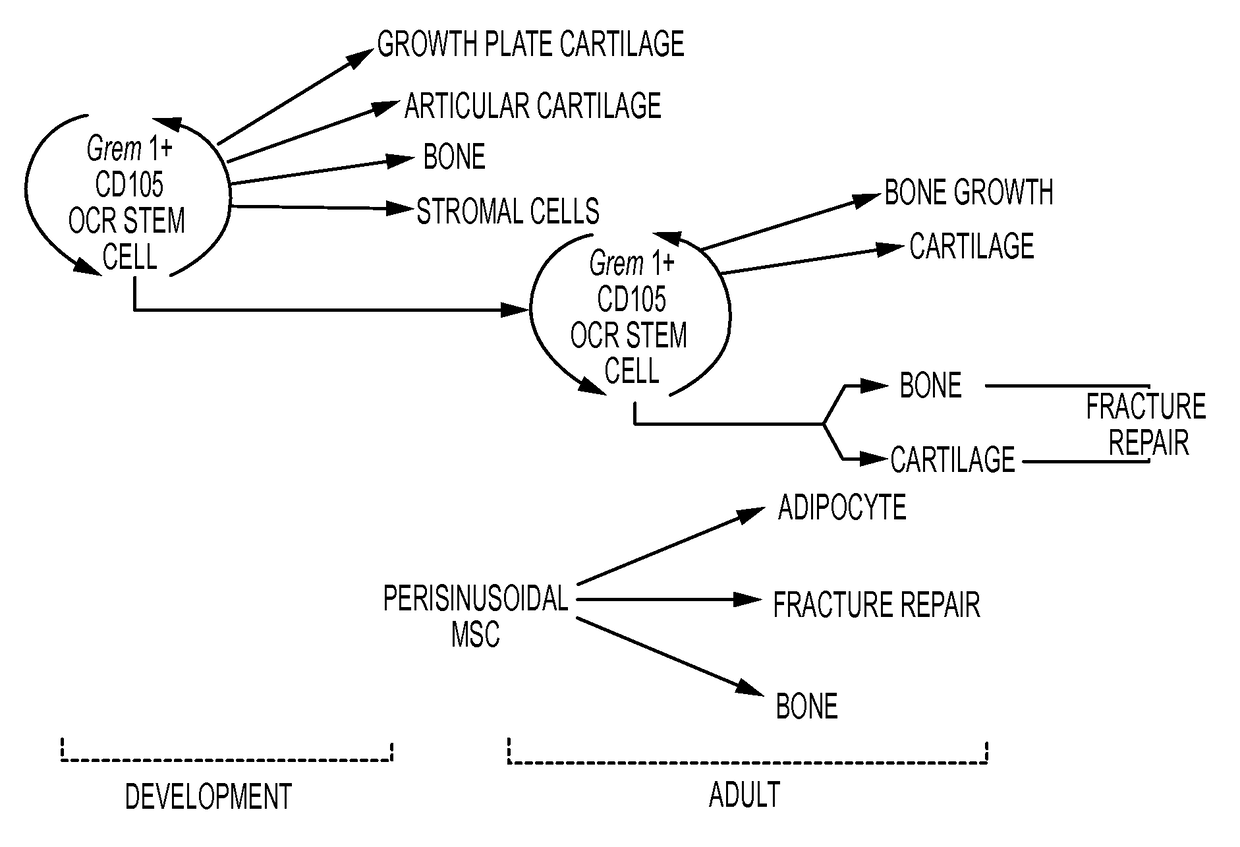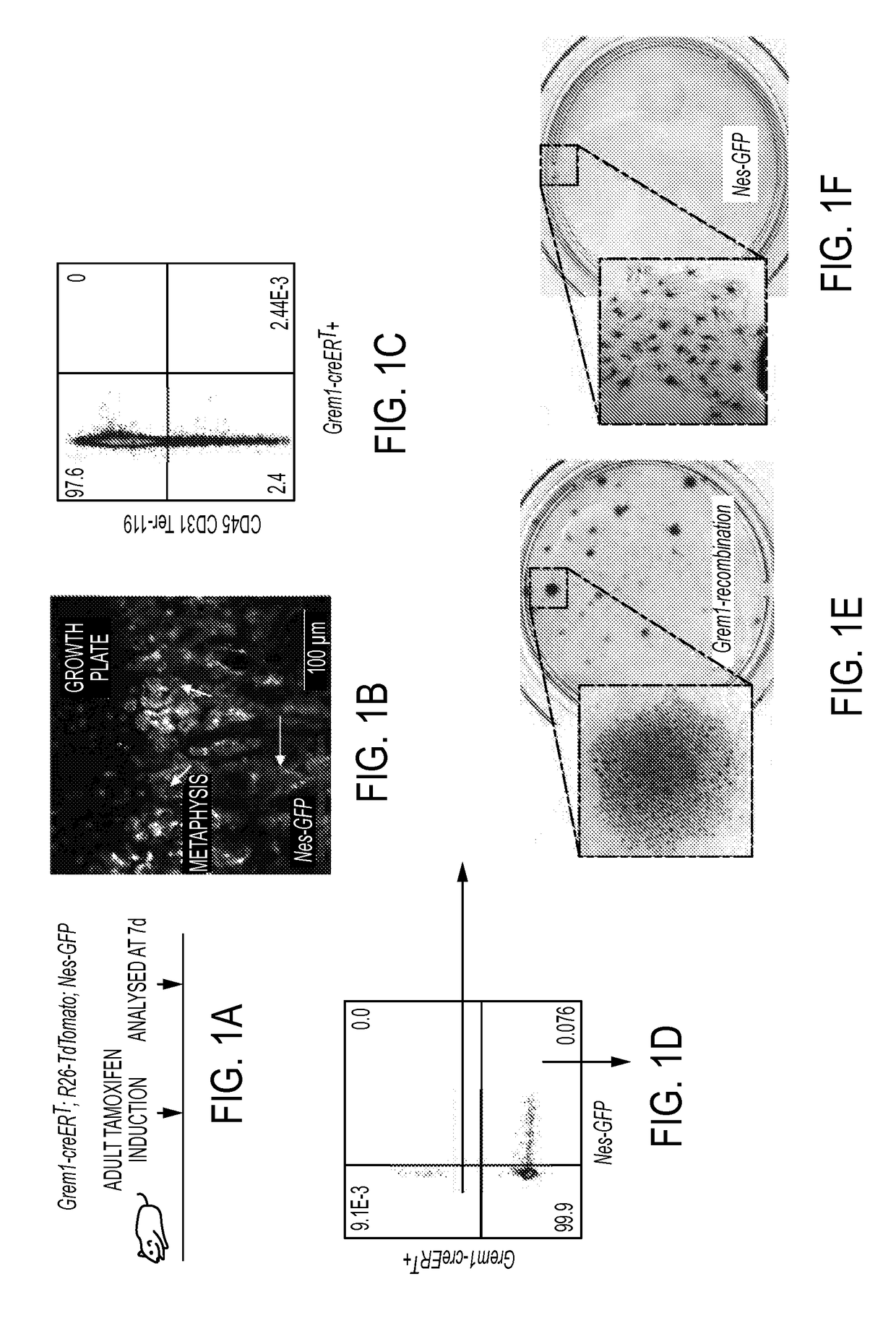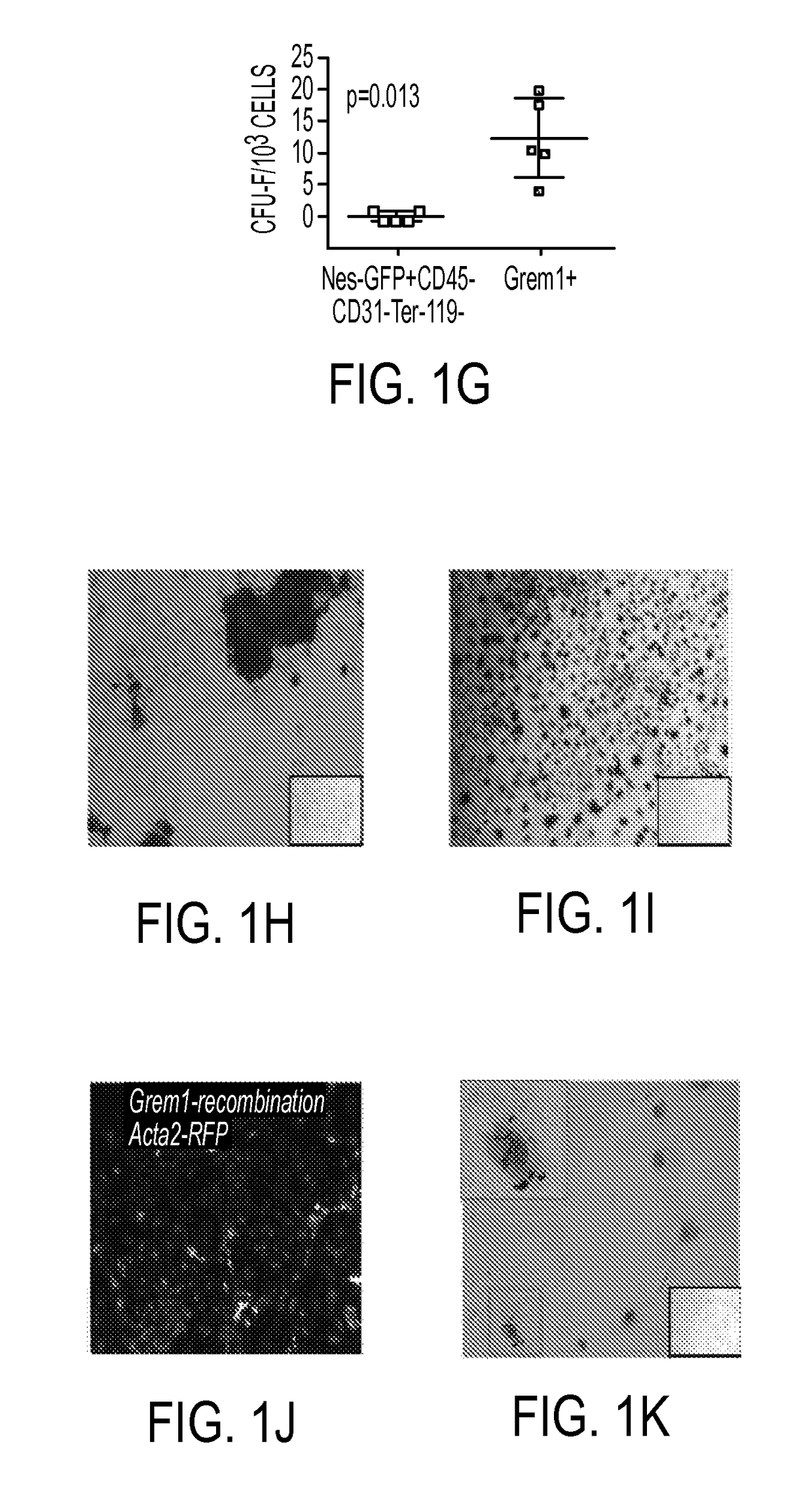Osteochondroreticular Stem Cells for Bone and Cartilage Regeneration
- Summary
- Abstract
- Description
- Claims
- Application Information
AI Technical Summary
Benefits of technology
Problems solved by technology
Method used
Image
Examples
example 1
Materials and Methods
Mice
[0140]The following lines were used: Nes-GFP (Mignone et al., 2004), Nes-CreERT2 (Dranovsky et al., 2011), Grem1-LacZ (Khokha et al., 2003), Acta2-RFP (Magness et al., 2004), R26-LSL-ZsGreen (Madisen et al., 2010), R26-LSL- TdTomato (Madisen et al., 2010), R26-LSL-mT / mG (Muzumdar et al., 2007), 2.3ColGFP (Kalajzic et al., 2002), R26-LSL-Confetti (Snippert et al., 2010), and R26-LSL-DTA (Voehringer et al., 2008) (Table 1B). The R26-LSL- mT / mG was used in the intestine to better appreciate intestinal architecture, but for the bone marrow, either the R26-LSL-ZsGreen or the R26-LSL- TdTomato was used to enable the addition of a second reporter, such as Nes-GFP, 2.3colGFP or Acta2-RFP. We generated the Grem1-CreERT transgenic by BAC recombineering (clone RP24-317C19), as previously described (Sharan et al., 2009). The recombineering primers amplified the CreERT-pA-fNf cassette with 60 bp homology arms upstream and downstream of the Grem1 translational start site ...
example 2
Generating a Specific Marker of Skeletal Stem Cells
[0156]To select a specific MSC marker in the bone and intestine, we considered human gene-expression arrays from bone marrow, intestine, and peritumoral mesenchyme (Delorme et al., 2009; Kosinski et al., 2007; Sneddon et al., 2006). Gremlin 1 (Grem1), identified from these studies, is a secreted antagonist of bone morphogenetic protein (Bmp)-2, -4, and -7 and a VEGFR2 agonist (Hsu et al., 1998; Mitola et al., 2010). Grem1 is important in normal skeletal and renal development and homeostasis (Canalis et al., 2012; Khokha et al., 2003; Michos et al., 2004). Furthermore, overexpression of Grem1 interrupts normal intestinal function and has been linked to intestinal cancer (Jaeger et al., 2012). Grem1 expression identified the most clonogenic fraction of marrow stromal cultures (Quante et al., 2011). In the present study, it was confirmed that expression of Grem1 was increased in undifferentiated mesenchymal cultures compared to endogen...
example 3
Grem1+ Cells Are Distinct from, and More Clonogenic than, Nes-GFP+
[0157]MSCs Tamoxifen induction of adult Grem1-creERT-R26-LSL-TdTomato mice (FIG. 1A) resulted in recombination in and expression of the TdTomato reporter (red fluorescent protein) in a rare and exclusively mesenchymal population of bone marrow cells (0.0025% of all single, live, nucleated cells after collagenase digestion [95% confidence interval (CI) 0.0022-0.0028]). In this experiment and elsewhere in the paper, we defined skeletal mesenchyme as triple negative for CD45−Ter-119−CD31− in enzymatically digested bone and bone marrow cells. CD45 characterizes most hematopoietic cells with the exception of maturing erythroid cells, which are marked by Ter-119. CD31 was used to exclude endothelial cells (Park et al., 2012) (Table 1D). The CD45-negative, Ter-119-negative, and CD31-negative fraction of bone marrow defines the nonendothelial, nonhematopoietic compartment that contains putative skeletal stem cells. Many Grem1...
PUM
| Property | Measurement | Unit |
|---|---|---|
| Fraction | aaaaa | aaaaa |
| Fraction | aaaaa | aaaaa |
| Fraction | aaaaa | aaaaa |
Abstract
Description
Claims
Application Information
 Login to View More
Login to View More - R&D
- Intellectual Property
- Life Sciences
- Materials
- Tech Scout
- Unparalleled Data Quality
- Higher Quality Content
- 60% Fewer Hallucinations
Browse by: Latest US Patents, China's latest patents, Technical Efficacy Thesaurus, Application Domain, Technology Topic, Popular Technical Reports.
© 2025 PatSnap. All rights reserved.Legal|Privacy policy|Modern Slavery Act Transparency Statement|Sitemap|About US| Contact US: help@patsnap.com



